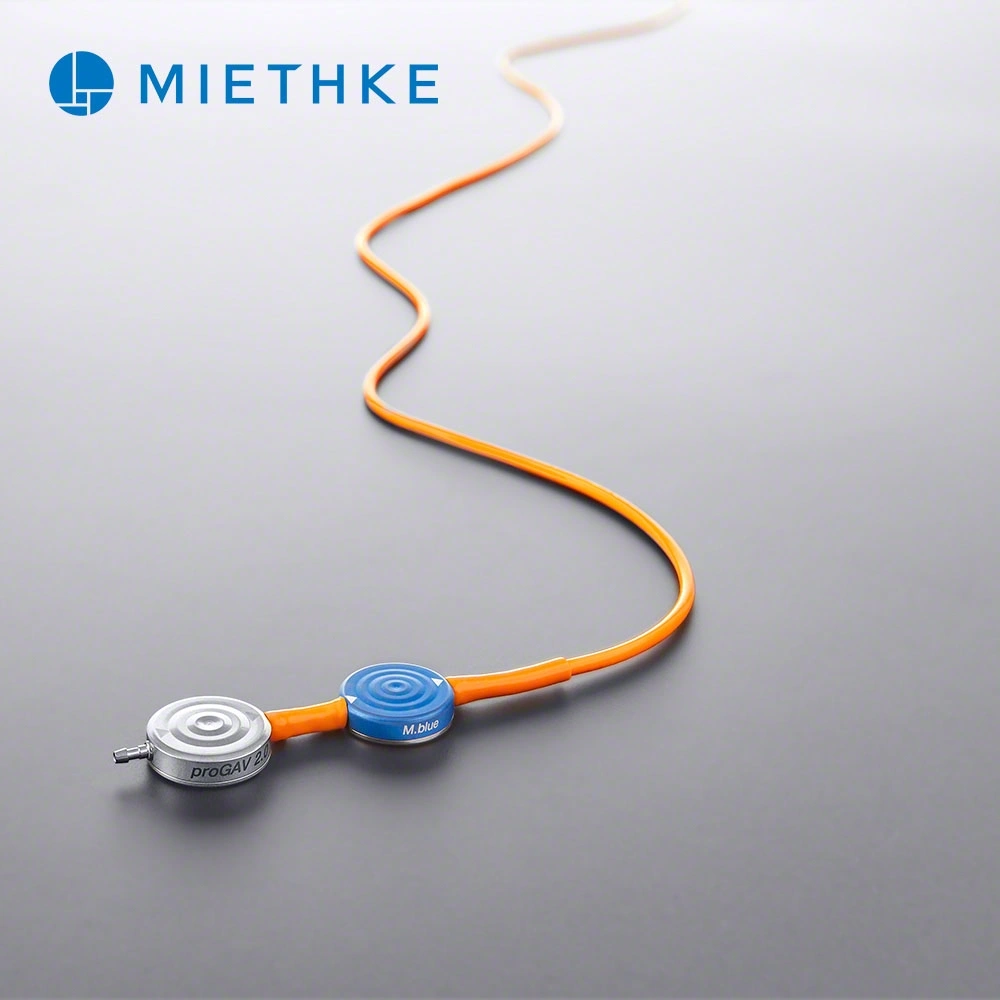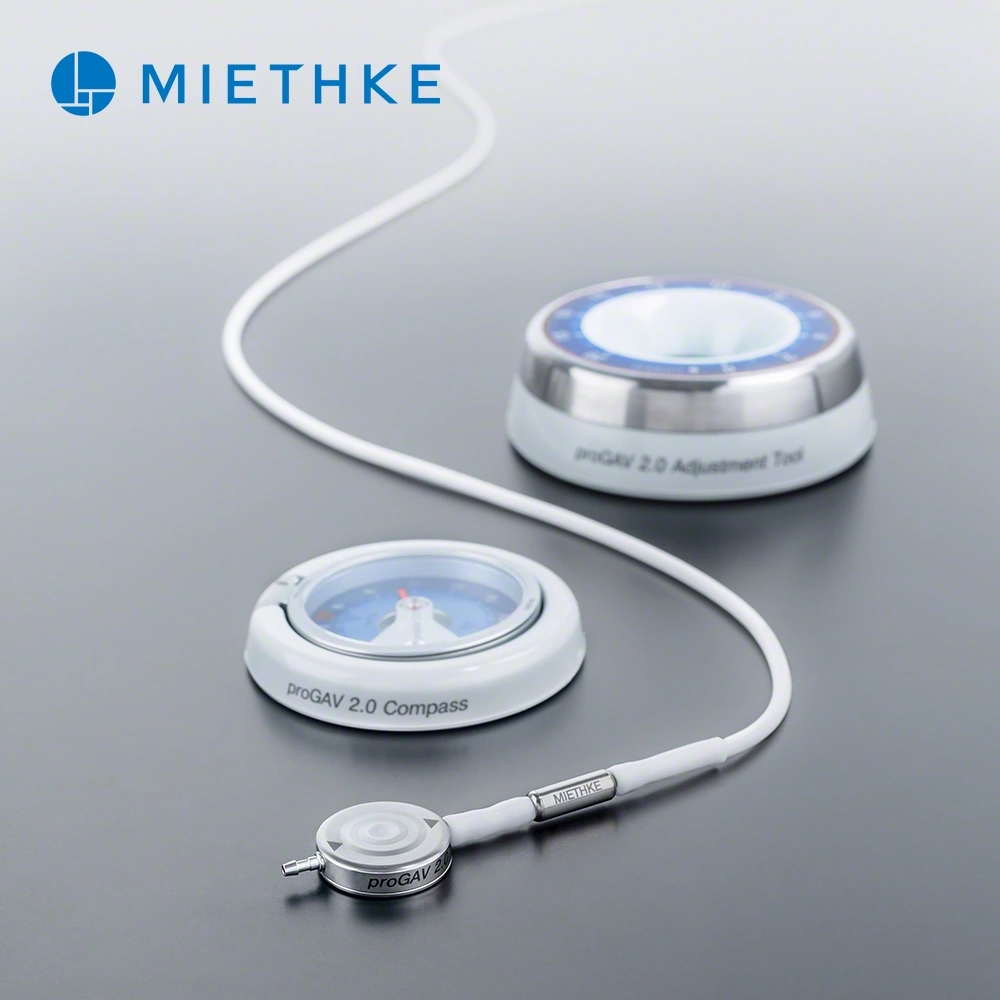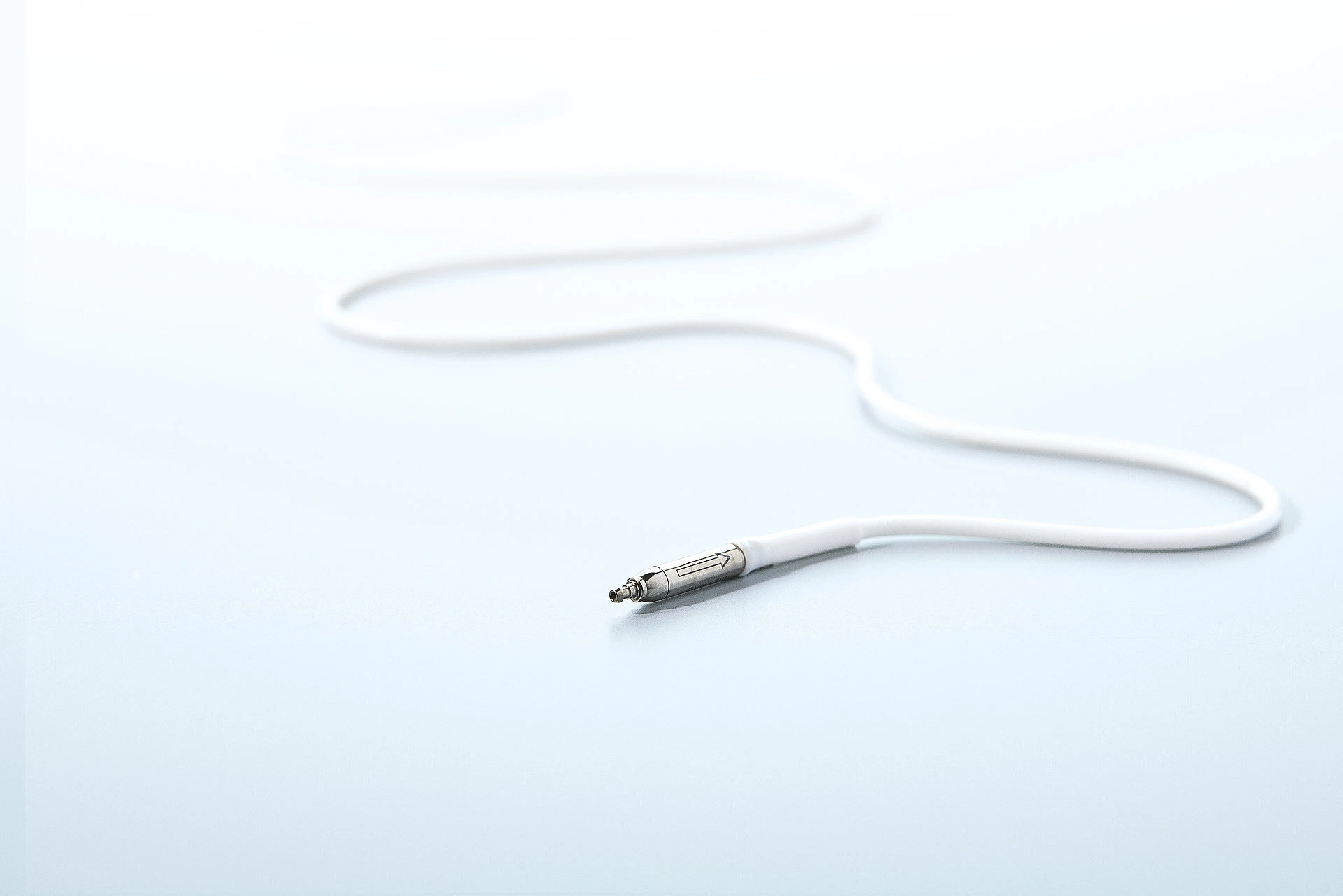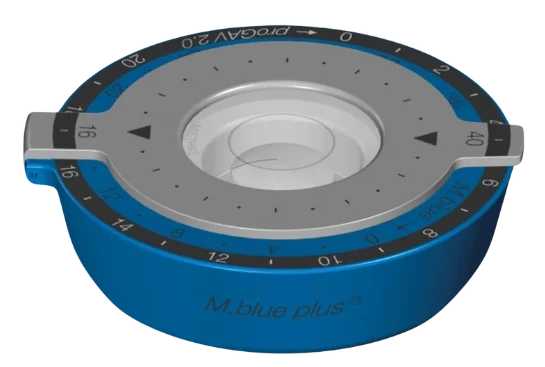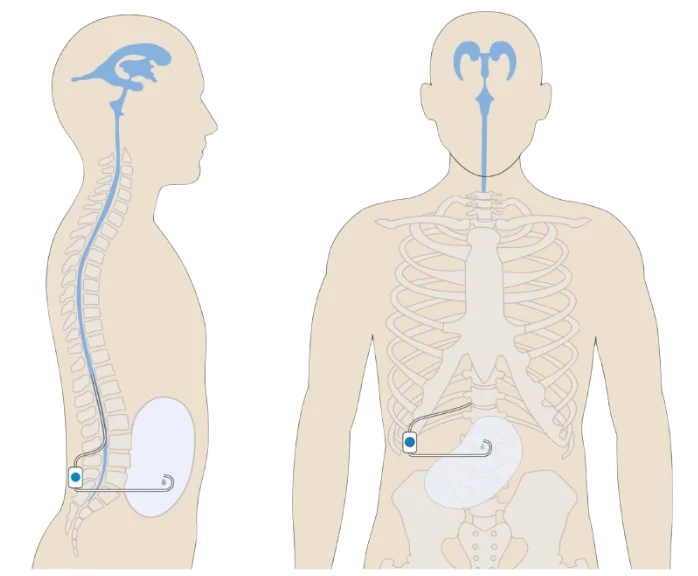– Position-Dependent Functionality: Combines an adjustable differential pressure unit
and a gravitational unit to adapt opening pressure based on body position, reducing
overdrainage risk.
– Infinitely Adjustable Settings: Provides infinitely adjustable pressure settings (0–20
cmH₂O) for tailored, non-invasive adjustments to meet evolving patient needs.
– MRI Compatibility: Safe up to 3 Tesla, with an ‘Active-Lock’ mechanism to prevent
unintended adjustments from magnetic fields.
– Innovative Adjustment Instruments: Soft-Touch’ instruments allow intuitive, safe valve
adjustments with tactile feedback, eliminating the need for X-rays.
– Durable Design: Made from robust, biocompatible titanium, ensuring reliability for
long-term use in patients of all ages.

